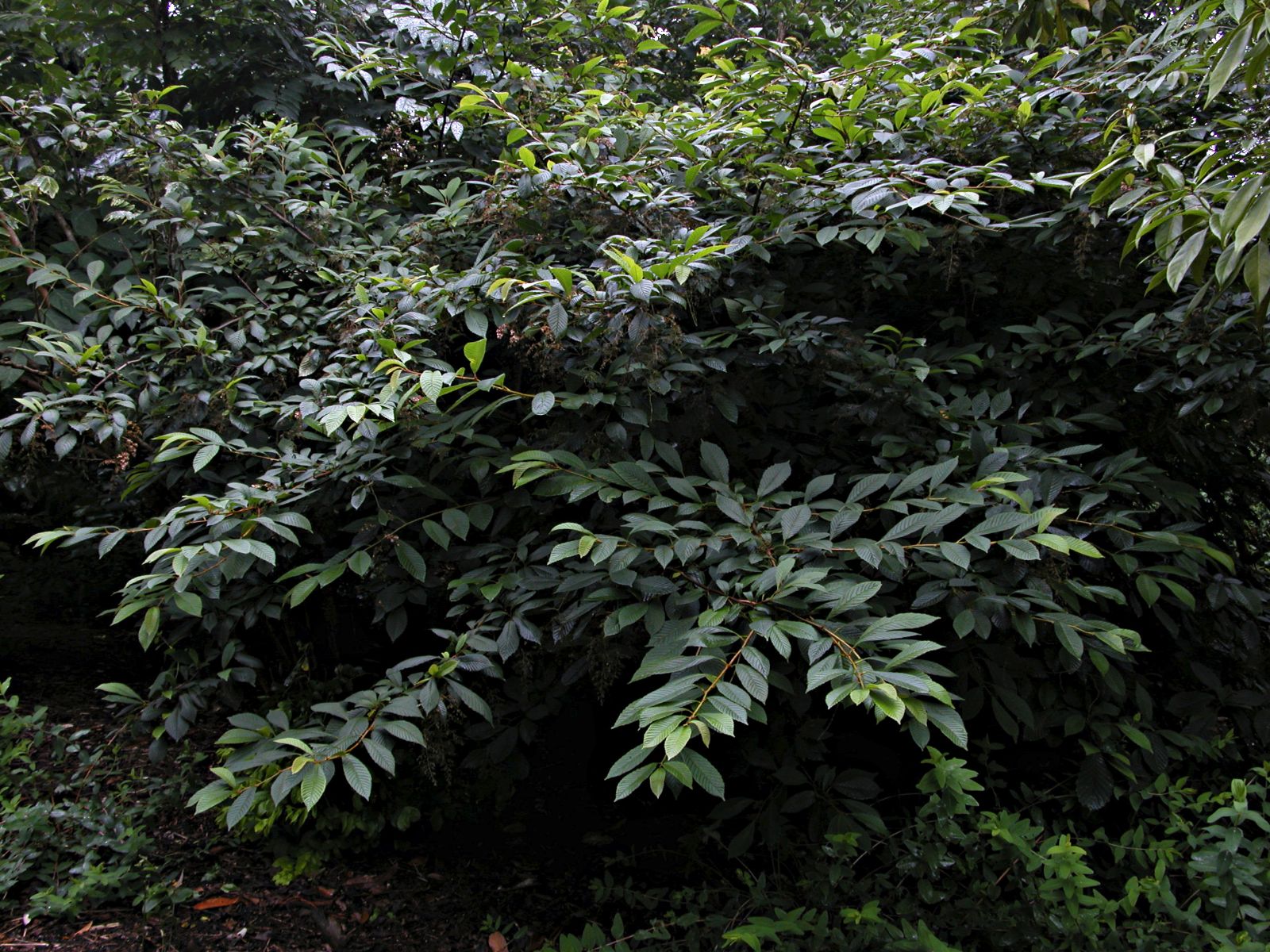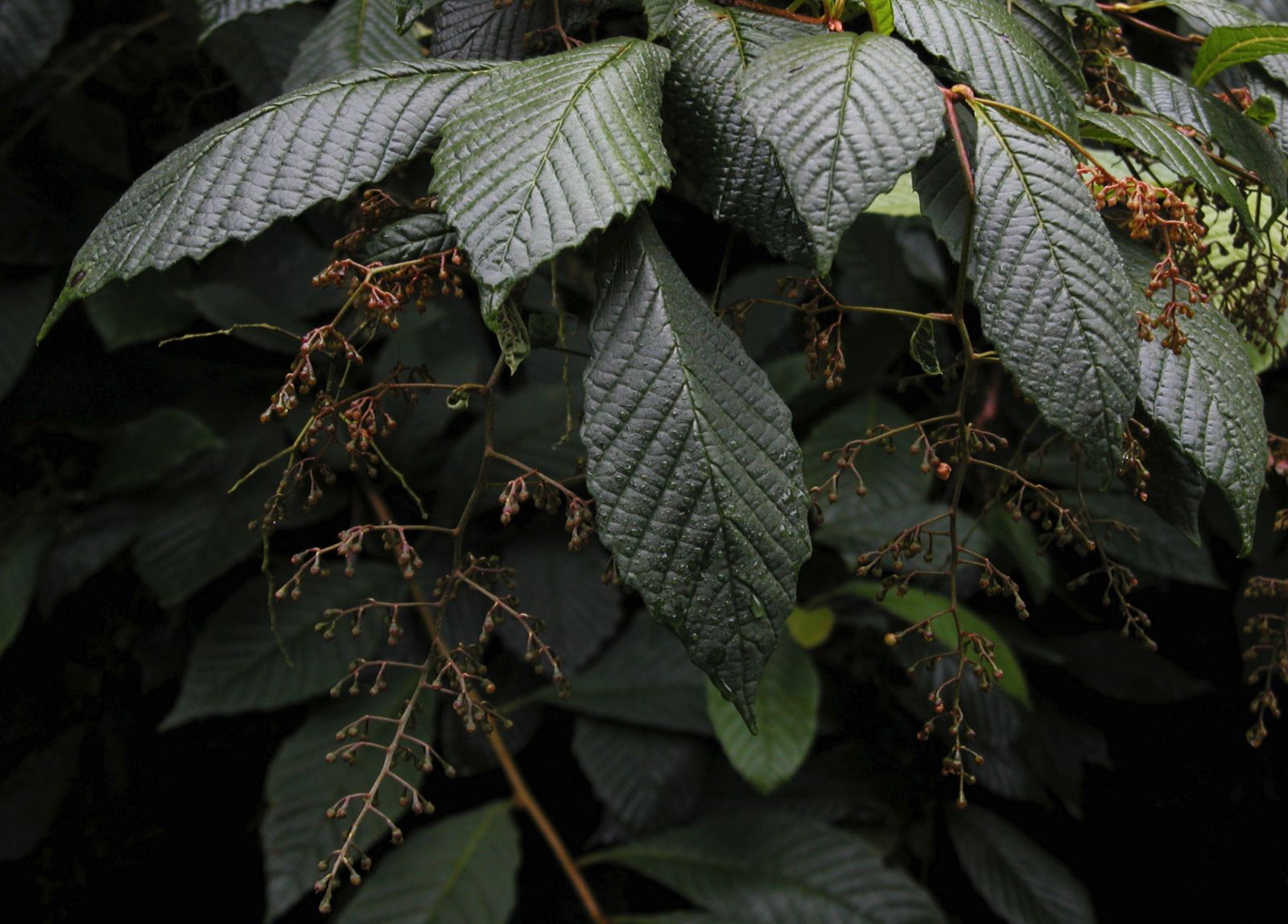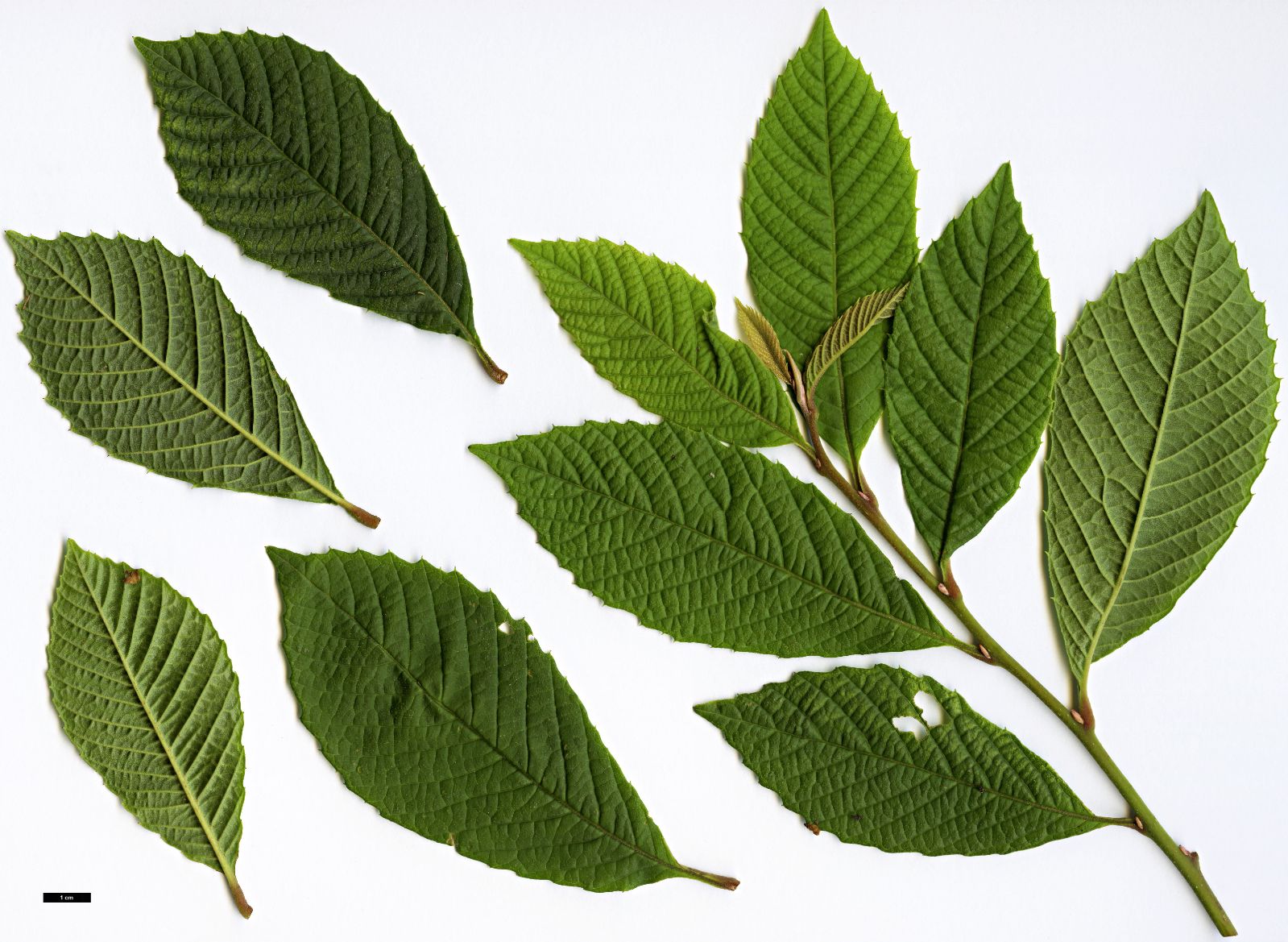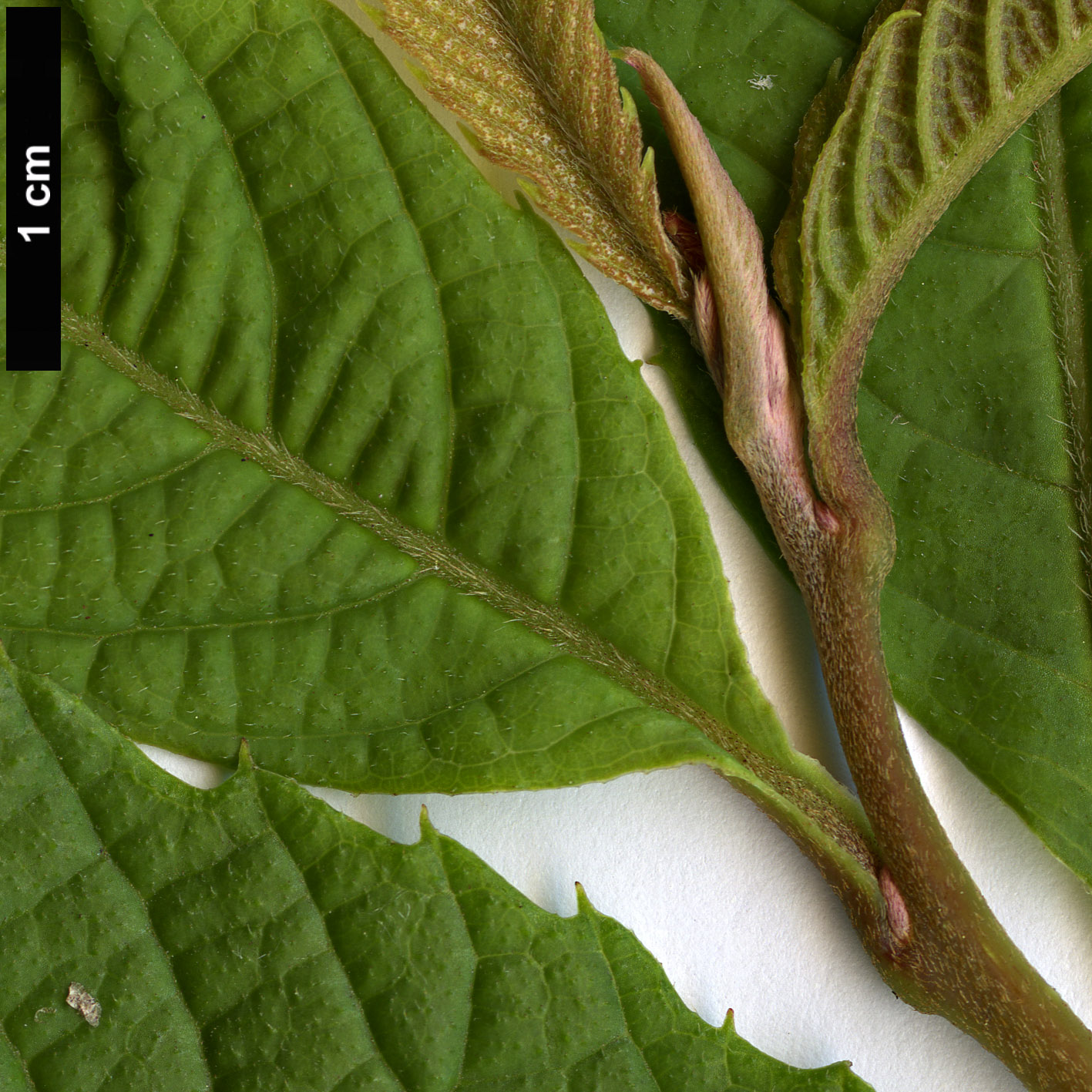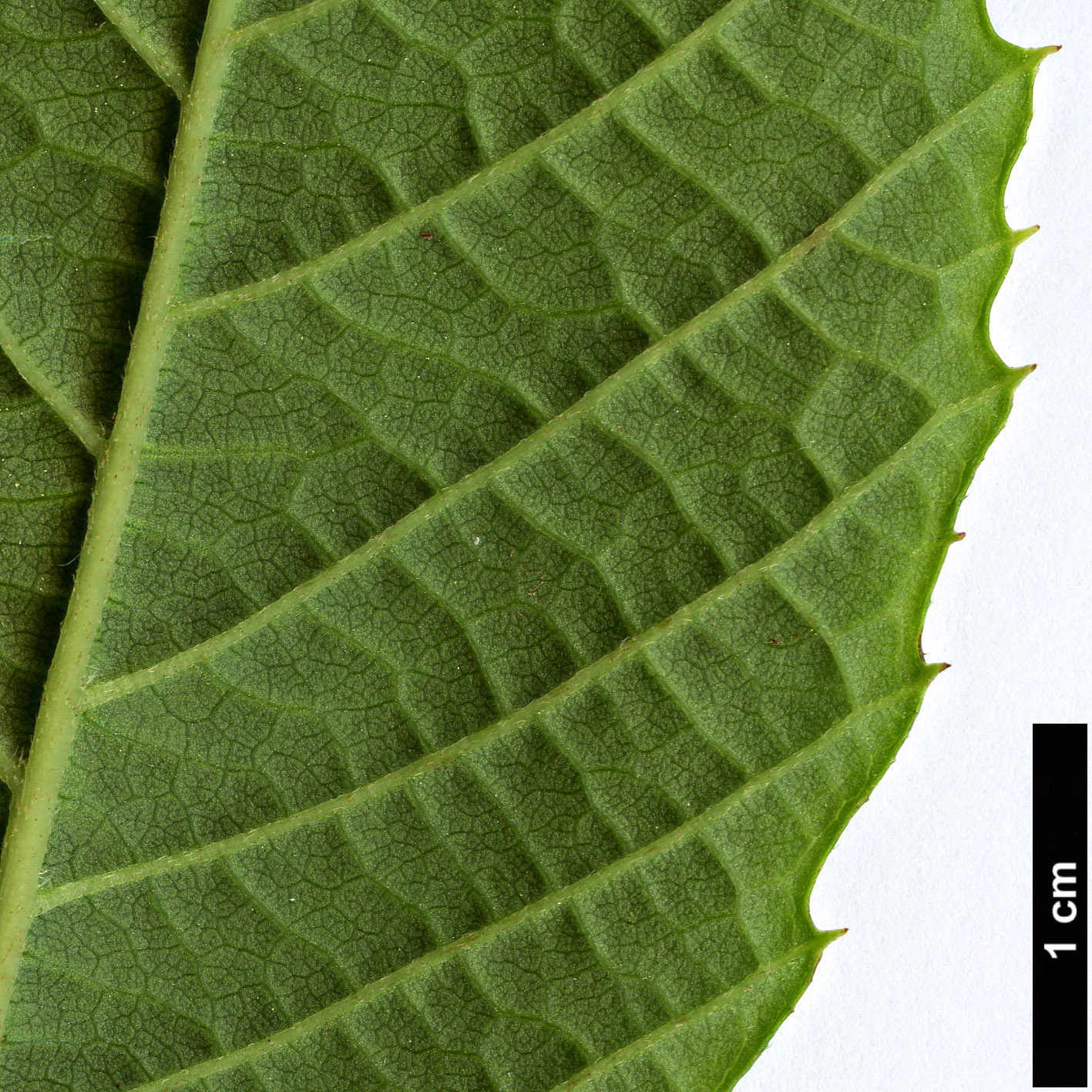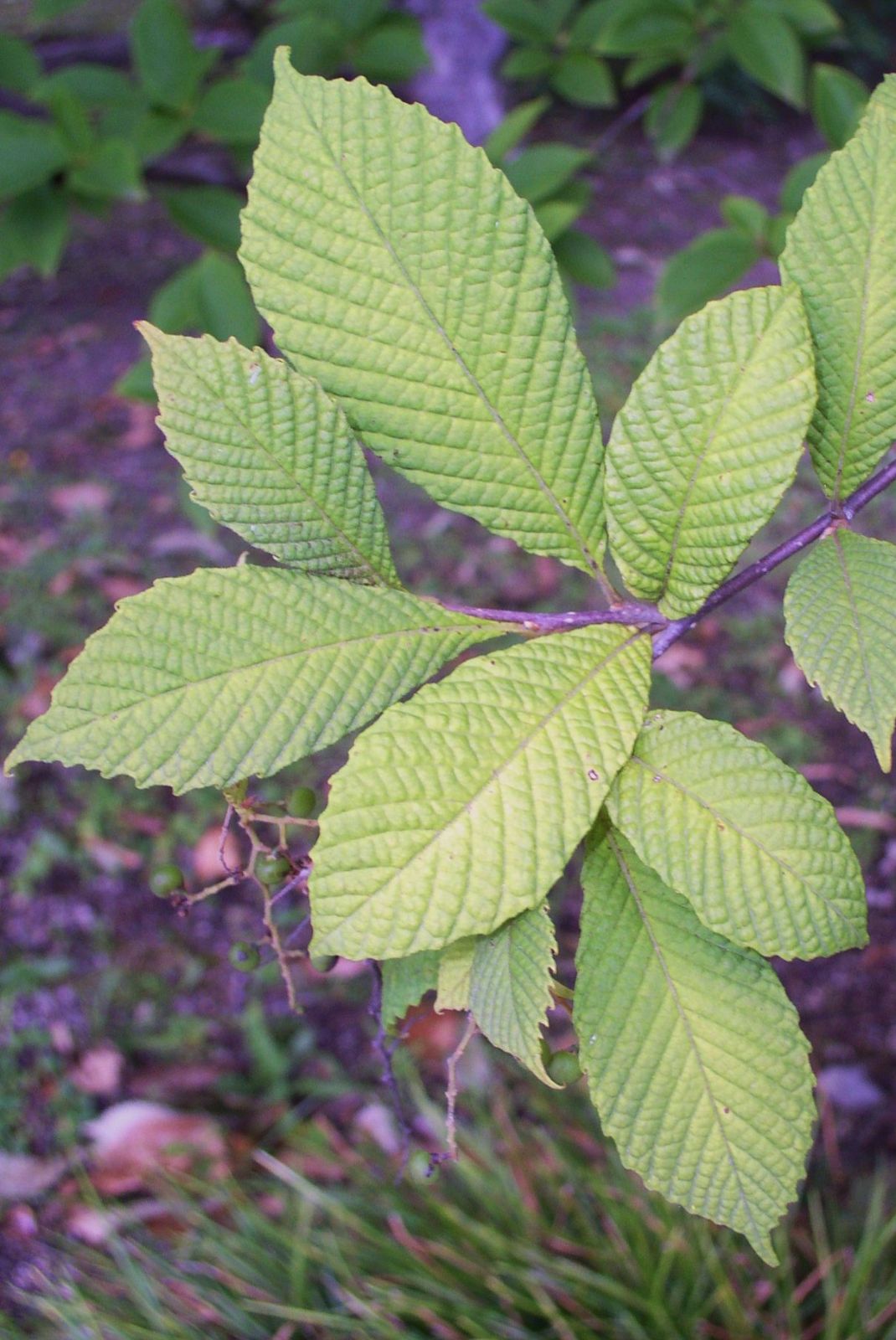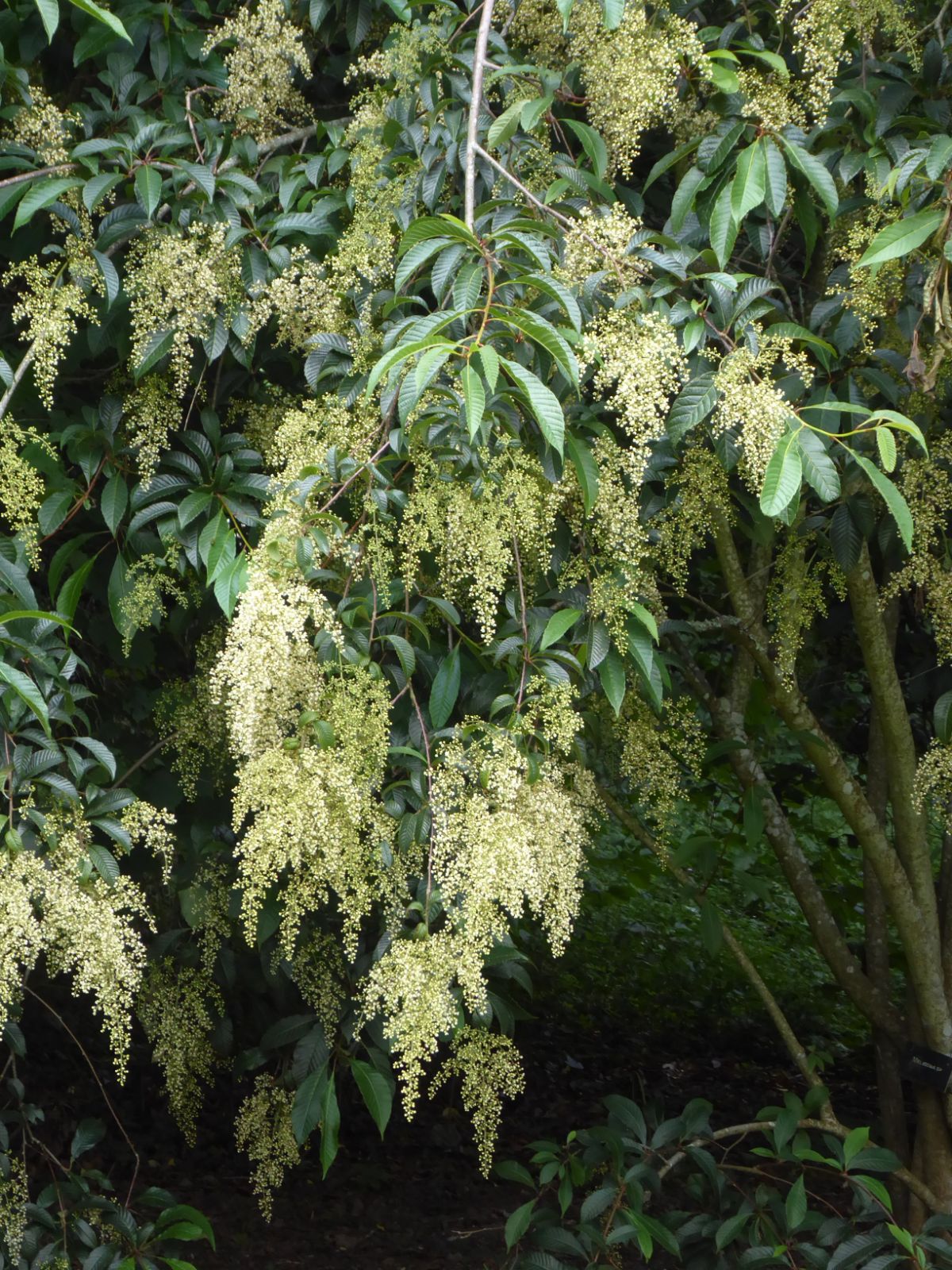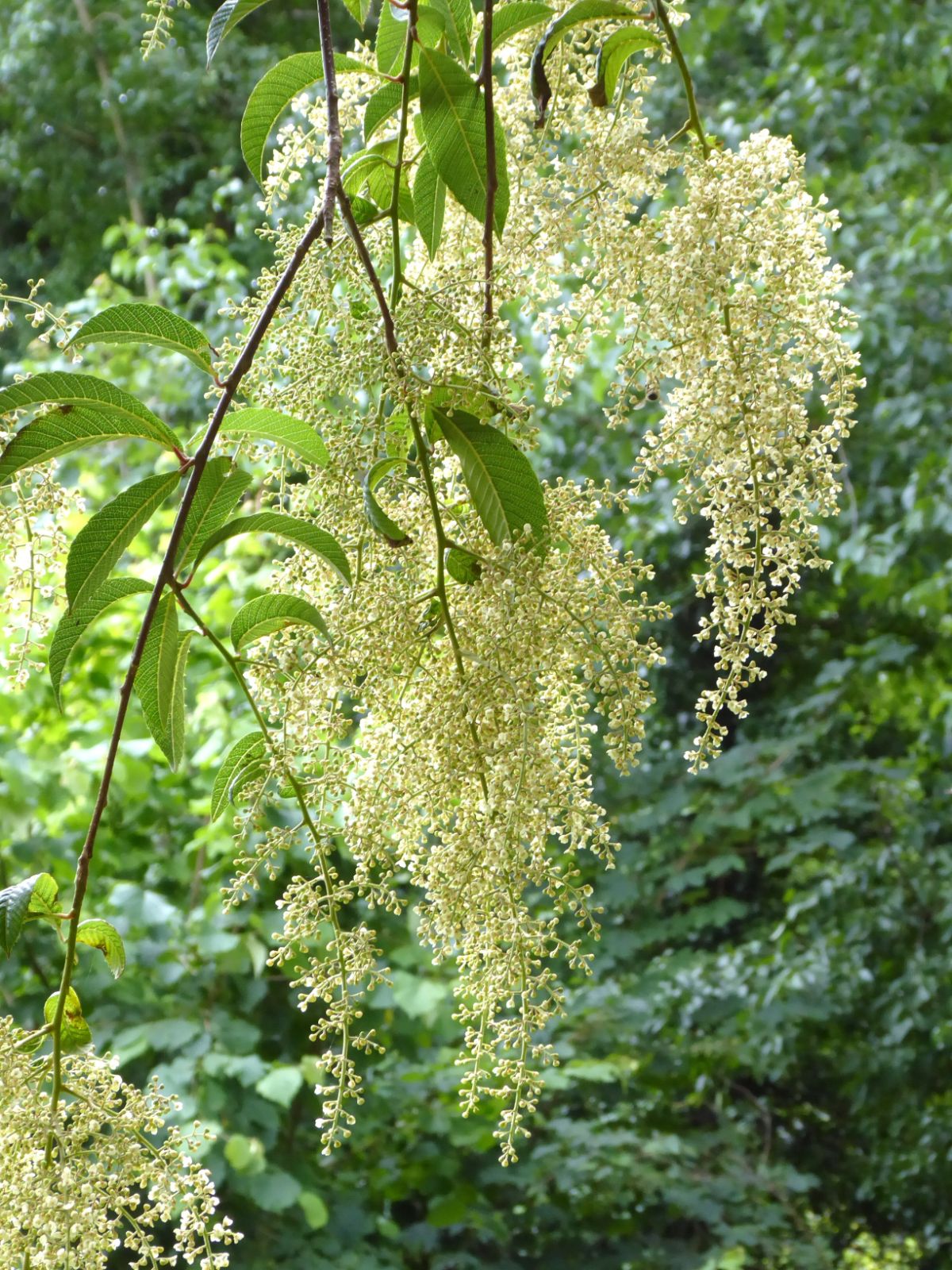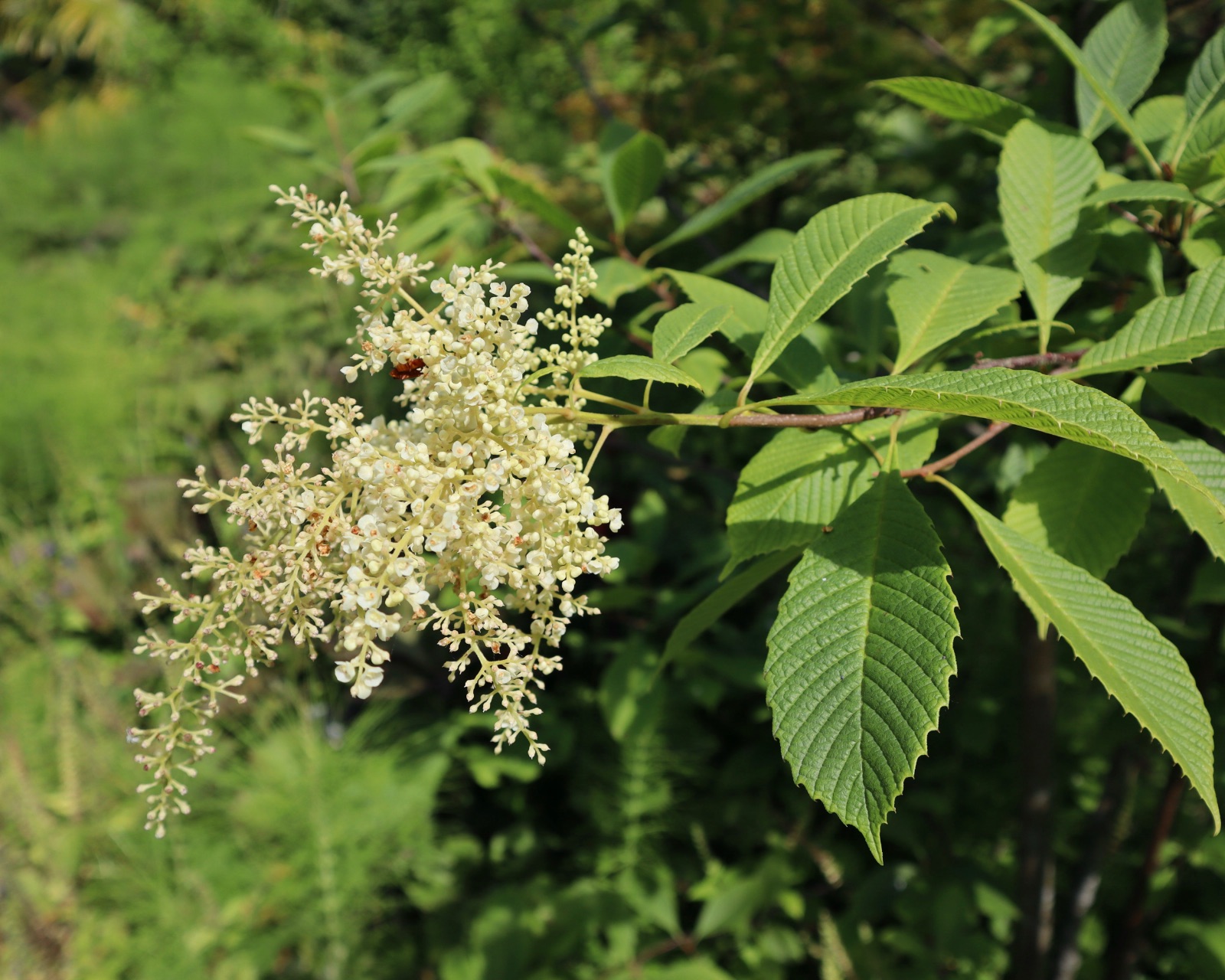Meliosma flexuosa
Sponsor
Kindly sponsored by
Lady Diana Rowland
Credits
Owen Johnson (2022)
Recommended citation
Johnson, O. (2022), 'Meliosma flexuosa' from the website Trees and Shrubs Online (treesandshrubsonline.
Genus
Synonyms
- Meliosma pendens Rehder & Wilson
- Meliosma dilleniifolia subsp. flexuosa (Pampanini) Beusekom
Small deciduous tree, to 5 m. Twigs purplish, pubescent; buds with brownish pubescence, usually 2 in each leaf axil. Leaves simple, 6–12(–20) × 3–4(–10) cm, obovate, tapering evenly to the base from halfway up, tip abruptly pointed; pubescent on both sides but lacking axillary tufts; veins in 12–18 pairs, conspicuously parallel and reaching the margin to serve one tooth; petiole 5–20 mm. Flower-head terminal, pendulous, 12–18 × 7–22 cm; peduncle and branches zigzagged, branches reflexed. Sepals 5. Petals 5, white, to 3 mm wide. Fruit obovoid, c. 5 mm wide. (Guo & Brach 2007; Clarke 1988).
Distribution China Anhui, Fujian, N Guangdong, Guizhou, Henan, W Hubei, Hunan, Jiangsu, Jiangxi, S Shaanxi, E Sichuan, Zhejiang
Habitat Mountain forests, 600–2800 m asl.
USDA Hardiness Zone 6
RHS Hardiness Rating H6
Conservation status Least concern (LC)
This is one of several deciduous Meliosma with neatly parallel leaf veins that can sometimes grow alongside one another in Chinese forests (van Beusekom 1971); it is distinct in its drooping flower-heads with zig-zag stalks and, out of flower, by its singly-toothed leaves which lack conspicuous tufts of yellowish hair under the vein axils. The species was introduced to England from Hubei in 1907 by Ernest Wilson, but Rehder and Wilson’s name M. pendens – from the pendulous flower-heads – was not published until 1914, by which time the species had already been described under the name M. flexuosa – from the zig-zag flower-stalks – by the Italian botanist Renato Pampanini. In his 1971 monograph on the Asiatic Meliosma, Frits van Beusekom demoted M. flexuosa as one of three new subspecies of the Himalayan M. dilleniifolia (van Beusekom 1971).
This nomenclatural instability has probably contributed to the apparent scarcity in cultivation of a species which is certainly pretty and probably quite easy to grow. The original plant at the Royal Botanic Gardens, Kew, which first flowered in 1920 (Bean 1981) and which was observed by van Beusekom to be self-fertile (van Beusekom 1971), has long gone. One mature tree at Birr Castle in central Ireland, identified as M. flexuosa, was 8.5 m tall with a trunk 49 cm thick (at 50 cm) in 2010 – larger than this species is reported to grow in the wild. At the Sir Harold Hillier Gardens, however, a mature bush was only 2.1 m tall in 1984 (Tree Register 2022). In 2022, plants were advertised by the Exclusive Plants Nursery in Cornwall; the species was cultivated at the Jardin Botánico de Iturraran in north-east Spain (Garin 2022). A more surprising record is of a bush in the University of Copenhagen Botanical Garden, planted in 2014 and now flowering (Johannson 2022). There are no records for the cultivation of this taxon in North America.

